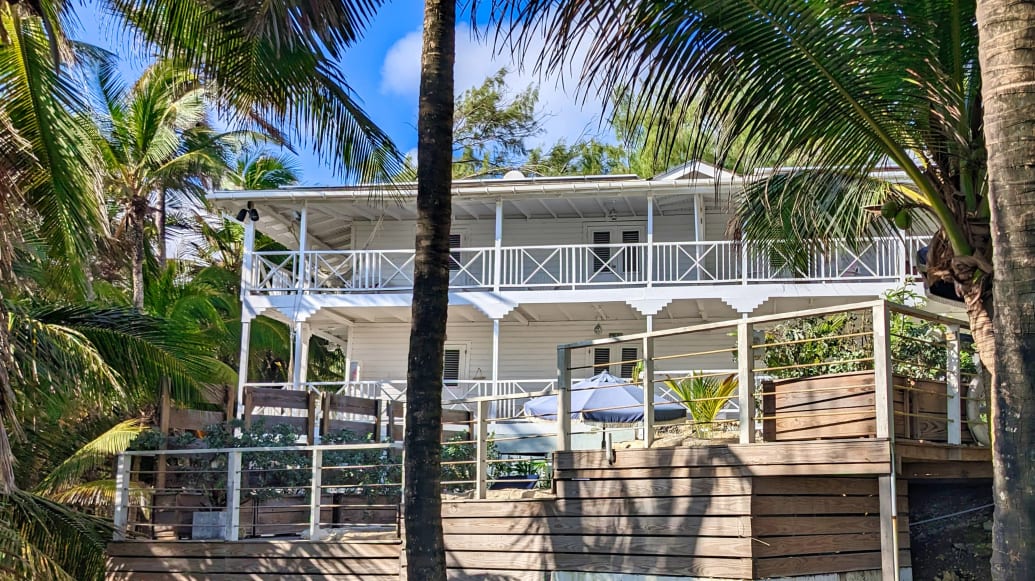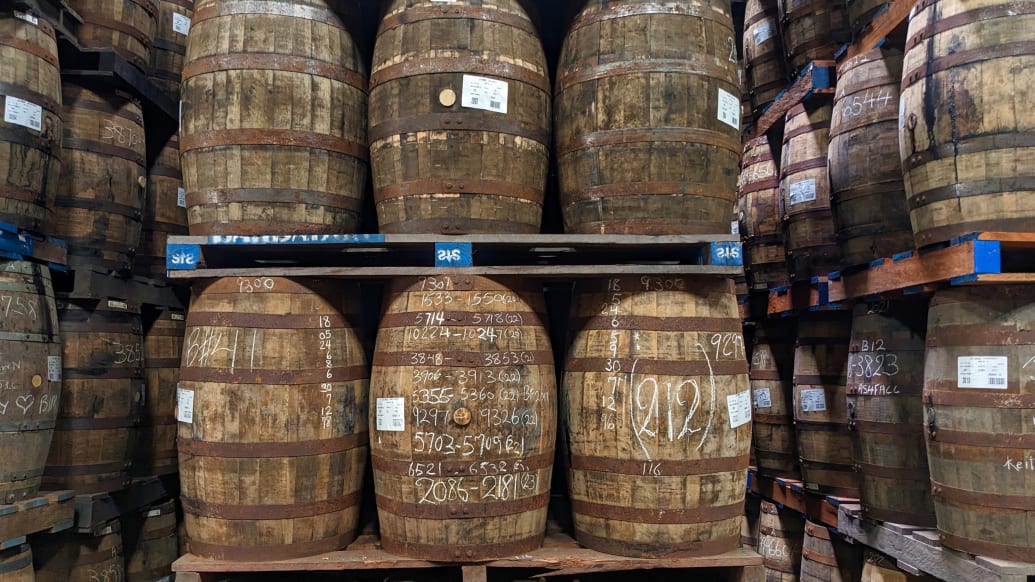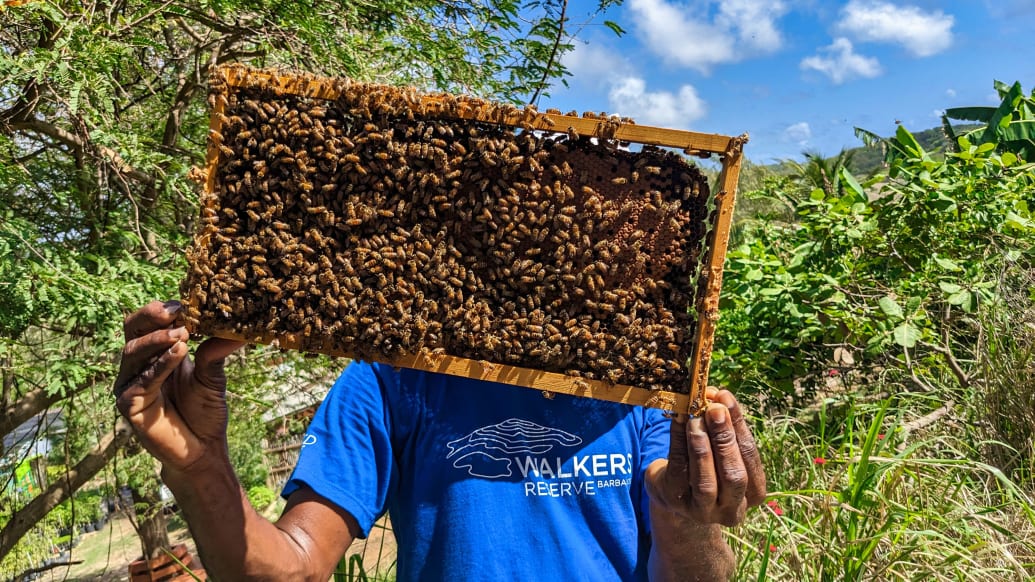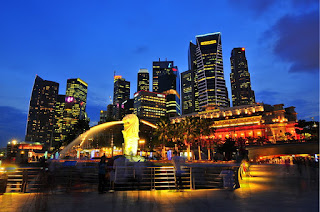IT Campus Security | College and School Campus | Education Security
Mango Tours Emerge As Big Draw In South-central Vietnam
Crowds of local and international tourists are rushing to explore mango tours in Khanh Hoa Province, south-central Vietnam, while farmers there are eager to be their guides.
The link between the mango farmers of Khanh Hoa Province and tourists coming from far and wide is created by Dang The Truyen, director of Camlamonline Limited Company, and his co-workers.
Efforts in launching mango garden tours
Truyen said that Cam Lam District in Khanh Hoa Province is considered the mango hub in the south-central region, covering some 7,000 hectares of mango cultivation.
Despite such potential, farmers have only sold mangoes after harvests.
Over the past few years, the prices of mangoes have fallen, forcing farmers to cut down mango trees or abandon mango gardens due to no profits.
"I came up with an idea to combine agriculture and tourism to help farmers increase income from their mango gardens," said Truyen.
"The district lies between Nha Trang City and Cam Ranh City, with the close proximity to many resorts, Cam Ranh International Airport, and some main routes, smoothing the way to welcome travelers."
Truyen set up a website at camlamonline.Com to introduce mango-based products, must-try eateries, and must-see places, especially mango gardens, in the district.
Mango tours bring new experiences and a feeling of immersion in nature to visitors.
At mango orchards, tourists can take photos of them with various kinds of mangoes and admire huge and ancient mango trunks, as well as big mangoes weighing nearly two kilograms each.
In addition, tourists on a mango tour can pick the fruits and eat them.
The district is home to a series of local dishes prepared with mangoes such as gỏi xoài cá cơm (anchovy mango salad) and canh chua xoài (mango sweet and sour soup).
As part of a mango tour, tourists are taken to the camlamonline.Com showroom to enjoy mango drinks and buy a variety of mango-based products.
Truyen said that his firm would work with more mango gardens and travel operators to offer the best mango tours to serve the demand of travelers.
Mango tours produce waves of emotions
Vo Van Cong, owner of a 600-square-meter mango orchard, said that his orchard had pulled in many groups of tourists for sightseeing free of charge.
"Tourist arrivals were unfamiliar to me but they made me happy," Cong said.
"All of us [farmers] initially felt unfamiliar with how to welcome visitors, as we are used to farming.
"As such, we were instructed how to receive guests. We started practicing as tour guides then.
"Many tourists have come to buy mangoes, helping me beef up sales."
Christina Nguyen, director of Zazen Travel Company, which has arranged tours to mango gardens, said that visitors did like this tourism product due to short travel time and low costs.
"They were surprised that the Australian mango variety in Vietnam has a different color and taste from the native species," she said.
"We have added this mango tour to our travel program, and will popularize it among foreign tourists."
Like us on Facebook or follow us on Twitter to get the latest news about Vietnam!
Can An Island Paradise Get Tourists To Care About Going Green?
Our early morning hike started from Bath Beach on the east coast of Barbados, where bright turquoise waters mingled with some rufous sargassum that washed up on shore.
"Our trail starts over here," said Jeremy DeVonish, pointing to a more wooded space. DeVonish, along with Jabbari Puckering, run an outdoor-focused hiking guide service called Tribe BB.
At the invitation of Visit Barbados, I was on this lesser-visited, Atlantic coast, which is known for its waves and surfing. Many people may think of Barbados as a place for parties, but I came here for something more low-key. I wanted to see how Bajans are protecting their island, and what ecotourism and conservation in tourism might look like here.
Getting out to hike felt like a must.
Our hike followed the old railway line, remnants of which can still be found along the trail. This short coastal hike came with an ever-changing, but easy to navigate, landscape, passing under sea grape trees, over rocky landscapes, around chalk hills, and through local communities. It was a snapshot of the island set to the soundscape of waves. Tribe BB wants to reorient people with the island's outdoor side. Their guides are professionals who know every corner of the island well.
We ended the hike at my homebase for the week, ECO Lifestyle & Lodge in Bathsheba, the vision of former New Yorkers, Kyle and Maryam Taylor.

ECO Lifestyle & Lodge, Barbados
Courtesy of Brandon Withrow
ECO Lifestyle & Lodge is a name that, admittedly, sounds a bit like it's keyword-search ready. But also, it's clear what this boutique hotel is about. The brilliant white lodge sits perched on a hill, along with two small pools and a deck set within palm trees that overlook blue tropical waters. It's breezy, light, and chill. I slept every evening to the sounds of those crashing waves below.
I stayed in a comfortable studio ($150+ USD), which came with a queen bed, ceiling fan and air-conditioning, a walk-in shower, a kitchenette, and a sitting area. Rooms are named after locations on Barbados, and they cleverly put me in the "Brandons" room, named after Brandons Beach in Barbados. My one complaint: the pillows are too stiff for my taste.
The lodge works hard to keep its footprint low, with composting, an organic farm-to-table restaurant consisting of a local, and mostly plant-based, menu, a robust recycling program that includes furniture built from repurposed wood, and glassware made from recycled wine bottles. They've eliminated 90 percent of single-use plastics.
All of this is what you'd expect a truly ecotourist friendly hotel to do, but there is something that stood out—the bottled water in my room labeled ECO Skywater. The next morning, I made my way to the ECO Skywater facilities to learn more about what makes them Eco.
Kyle and Maryam wanted to address the water scarcity problem in Barbados, which not only has to supply its citizens with clean water, but also the large number of tourists that flock to it. Instead of following traditional routes, ECO Skywater sources water by pulling it from the air using solar-powered hydropanels, and bottling it using glass or bottles made from plant products—avoiding plastics. The water isn't from run-off, so it is pure H2O with added calcium and magnesium for flavor. It did taste better than the two plastic bottled waters I had while on the island.
"We are making water with no byproduct whatsoever," Kyle Taylor told me, "taking it out of the air, right? Then we're doing it off grid. And then we put it into glass bottles on the delivery and return system, or plant-based bottles that can be composted in less than 30 days." In other words, bottled water or sodas don't have to come in plastic.
This nerding out on sustainability was a foretaste of my week in Barbados.
Every day, I'd wake up and get breakfast and meet my expert guide for the week, Shawn Butcher, the chief executive concierge (CEC) of Reflections of Barbados, a transportation and full concierge service that specializes in tours, and we'd check out something new in sustainability and tourism around Barbados.
So, in the name of sustainability research, of course, I stopped by Mount Gay Distillery to get properly sauced on rum.

Rum casks at Mount Gay Distillery
Courtesy of Brandon Withrow
Rum was invented in Barbados and Mount Gay Distillery is the oldest rum distillery in the world—a deed shows it as far back as 1703. The distillery isn't stuck in history, though. They are working toward greater environmental and social action (giving new meaning to drinking responsibly), like organic fertilizers, 100 percent renewable energy by 2028, tree planting, and increasing their beehive count.
Tours at the distillery give guests the full production experience from start to finish, from its water source to its molasses fermentation, to its distilling and casking. Trudiaan Branker is their first woman Master Blender, and her word is law. The rum is ready when her palate says it's ready.
I also dropped-in at Walkers Reserve, which is part of the The Walkers Institute for Regenerative Research and Design (WIRRED) to try The Bee Experience. For more than 50 years, the property has been Walkers Sand Quarry, but the owners began looking to a future without the quarry, in which they could regenerate the land and turn it into a nature reserve that thrives on agro-tourism. The plan means going beyond sustainability and into regenerative tourism, which means leaving a place better than it was.
To create a space with thriving biodiversity, however, means also having pollinators.
Having properly suited-up, head beekeeper, Julian Mangal, showed me around the property to see the hives and experience elements of beekeeping. The Bee Experience is something tourists can do that contributes to their regenerative tourism efforts. They also offer a range of other tours—walking tours, driving adventures, birding—that introduce tourists to the Bajan landscape and fund their regeneration project.
When tourists sign up for experiences in places like these, they are putting their dollars toward something that can have longevity. Destinations are more frequently looking to have visitors participate in the regenerative process of a place, where you get to leave a bit of yourself somewhere without it being a negative thing.

Julian Mangal of The Bee Tour with Walker Reserve
Courtesy of Brandon Withrow
After The Bee Experience, for example, I returned to Bathsheba where I planted a tree in the town park—a lucky tree that now has an ocean view. This was part of Barbados' We Plantin' project which intends to have more than a million new trees planted by 2024-2025. Tourists can join a number of similar projects, like a beach cleanup, to give back to the island before they leave.
People come to Barbados because the island is beautiful, and that means there is a financial incentive for keeping that ecosystem safe.
Last year, The Nature Conservancy announced that Barbados was a recipient of its Blue Bonds for Ocean Conservation program, which helps island and coastal nations like Barbados to refinance their national debt to unlock sustainable financing. That new funding allows for developing new marine protections and fighting climate change.
Climate change is strongly impacting the Atlantic shore of the island. While hiking, my guides pointed out key areas where rocks and older infrastructure were once connected to the island, but due to erosion were now squarely in the sea. Barbados' tourism is a large part of its economy, and it is reliant on this natural capital thriving. This includes the country's shores and waters, especially in handling pollution run-off that's damaging its coral reefs and erosion that impacts endangered hawksbill and leatherback sea turtles. (The Barbados Sea Turtle Project works to protect, monitor, and restore turtle populations.) Regenerative tourism is an investment that helps protect all of this.
My week, then, was a less than traditional experience of an island vacation, but we need more of that. We need tourists who think about how they can make a place better through their tourism choices.
This isn't to say that I didn't do some of the usual touristy things.
I ate great food.
The Atlantis Hotel on the East Coast has a stunning ocean view with a fantastic pan-roasted pork tenderloin with crushed fried plantain and sautéed asparagus with apple purée.
I had dinner at the bright and colorful Cocktail Kitchen in Bridgetown—a restaurant that, as I discovered, also serves Eco Skywater. This was definitely my best meal experience on the island, leaving me wanting to return to finish off the rest of their menu.
I started with their refreshing Mango Chow cocktail, which is E.S.A. Field White Rum, mango puree, cilantro, lime, and brown sugar. If you are part of the population that finds cilantro to taste like soap, it may not be for you, but this also gives it a great kick.
Rather than have a main, I went for a taste of their flavors through small bites and shareables—none of which disappointed.
I dove into their Thai fish cakes (pieces of fish and sweet potato slowly cooked with green Thai curry, crusted in panko and fried, and served with cilantro aioli), flying fish tacos (crispy flying fish, avocado puree, capers, Bajan pepper sauce aioli, pickled onions, chili flakes & lime), and roast breadfruit and lobster (fire-roasted breadfruit with lobster and salt fish, tobiko and Bajan pepper sauce aioli). This was my first time trying breadfruit, which is a traditional Bajan food source. It's incredibly versatile—starchy like a potato when mature or sweet and soft when ripe. It felt like comfort food.

Catamaran sunset tour with Tiami
Courtesy of Brandon Withrow
And as part of my effort to just relax—which I'm terrible at—I enjoyed a fantastic sunset tour with Tiami Catamaran Tours, which included an opportunity to snorkel with sea turtles or just relax in the sun on clear waters drinking free-flowing rum as the sun goes down. And on my last night, I took in a Bajan institution: the ever-popular and tourist favorite, Harbour Lights Dinner & Floor Show, which came alive with dancers, music, and an audience fueled by more free-flowing rum and a mix of cocktails at the open bar.
So, I drank rum. I guess, I'm saying I drank a lot of rum.
But on my way to do so, I also experienced a part of Barbados I hadn't expected—a different perspective on island life that hopes to see tourists leave the island better than when they arrived—even if they leave with a bit of a hangover.
Florida Bucket List: 65 Fun Things To Do, Places To Visit From The Keys To The Panhandle
palmbeachpost.Com cannot provide a good user experience to your browser. To use this site and continue to benefit from our journalism and site features, please upgrade to the latest version of Chrome, Edge, Firefox or Safari.





Comments
Post a Comment